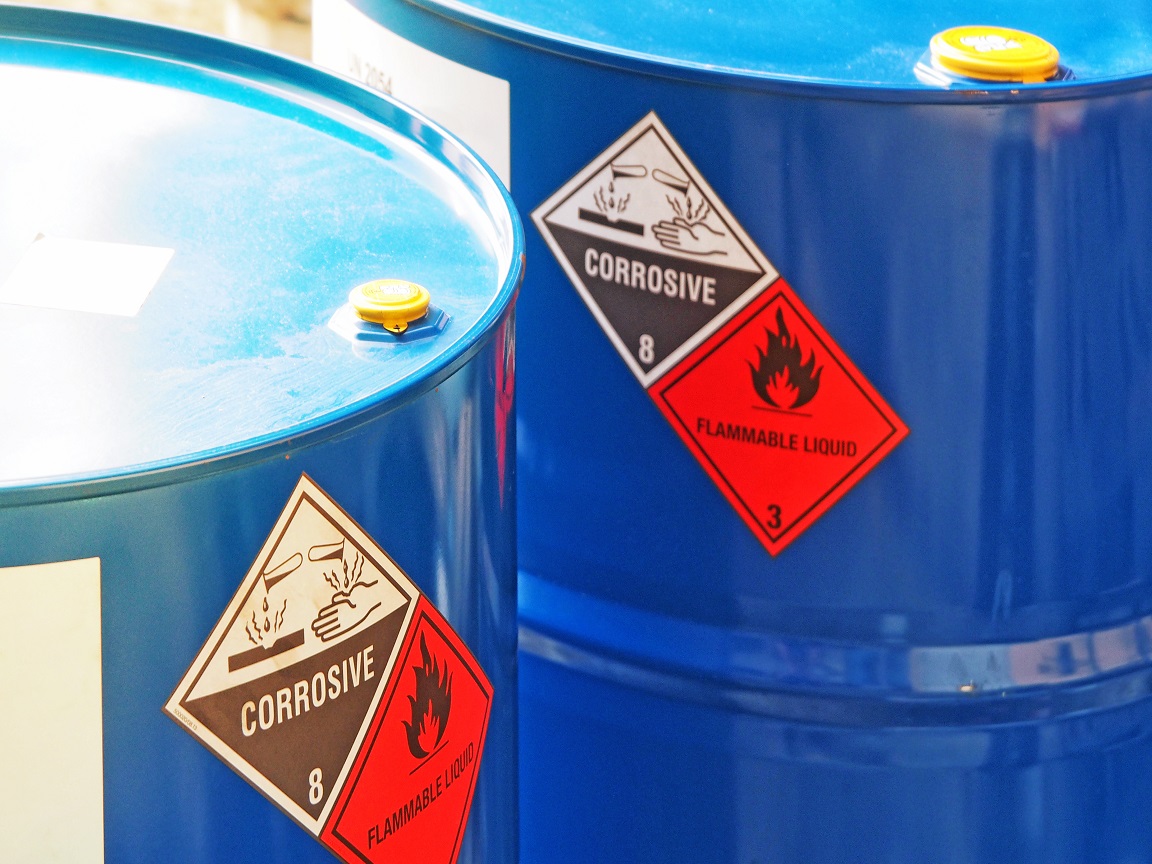Labels for Waste
If you are a waste generator or an environmental services company who accumulates waste on site in drums, you are responsible to ensure that you properly label drums and other hazardous waste containers. Below are some of the requirements for Hazardous Waste Tracking Labels.
What Should Be Included ?
Ensuring that your drums’ labels are correct and have detailed information is critical to ensuring the safety of those handling and transporting those drums.
Date Of Accumulation
The date that crews began to accumulate the waste is important, because legally waste can only sit onsite for a certain amount of time. According to the California DTSC, this date must be clearly marked and visible for inspection on each drum.
Even if a drum has been used by the generator to collect or consolidate waste that was initially accumulated in another container, it is still subject to the same labeling requirements. That means the initial accumulation and “90-day period” dates on the collection drum must be the oldest of the initial accumulation. This may require a date change if older substances are added to the collection drum.
Waste Details
Each container that holds waste must be labeled with the words “Hazardous Waste.” In addition, each drum must include the composition and physical state of the waste and a statement that calls attention to the particular properties of the waste.
For shipments, the DOT also requires each non-bulk package (maximum capacity no more than 119 gallons) to display the proper shipping name and identification of the material, as well as the appropriate diamond hazard labels for the primary (and most subsidiary) hazard classes of the hazardous material.
Generator Details
Labels must also include details about the generator. This includes the name and address of the generator. The EPA requires the same information for each drum with a capacity of 119 gallons or less.
Label Details
Labels should also contain a unique barcode or QR Code that uniquely identifies the container. This unique barcode or QR Code can be used by warehouse or yard staff to move waste, bulk up waste containers, pack down waste from a large container to smaller containers.
Industry Standards
Although the above regulations are imposed by federal and state legislation, there are industry standards that waste generators are also encouraged to meet when labeling drums.
For example, all personnel should use the same method to label containers. While one company may prefer to use prepared labels, another may prefer handwritten labels. All waste handlers should be properly trained to know what each field on a label requires.
Workers should apply labels to the containers as soon as the waste is placed in the drum. Before reusing drums, all old markings and labels should be washed off or blacked out.
Where Labels be Placed?
In addition to a label’s content, there are requirements in regards to the placement of the label.
Requirements include:
Labels must appear in their entirety. They should not be placed near other labels to avoid being overlooked. Though not required, the DOT recommends a 6-inch space between labels if there is more than one on a drum.
The primary hazard label should always be given priority in placement. In other words, if the drum includes two labels, the primary label should be placed above and to the left of the subsidiary hazard label.
Do not place labels on the bottom of drums. This increases the risk of workers overlooking the label.
Remove any old labels before reusing the drums. This will help avoid confusion over the drum’s contents.
IMEC Technologies provides Safety Management Software to increase worker safety and aid compliance. IMEC’s Safety Management Software will manage inspections and audits, provides hazard identification, incident reporting, management of corrective and preventative actions from generation to closure. IMEC provides lock out tag out software solutions that will allow users to create lockout tagout procedures using an intuitive Mobile App and Manage Lockout Tagout Procedures, also the Review and Execution of those Lockout Tagout Procedures using the Mobile App. Annual Lockout Tagout Procedures audits are conducted using a Mobile App. The Mobile Inspection App allow users to perform inspections and audits, for example the system can be used as a Fire Extinguisher Barcode Inspection Software system to manage monthly fire extinguisher inspections and general fire safety inspections and also to record safety observations and manage corrective actions, anywhere and anytime. The solution can be used as a fire extinguisher barcode inspection software system or life safety inspection system to aid compliance in Higher Education, Healthcare, Industrial and Commercial Organizations. Benefits from a Fire Extinguisher Barcode System include the elimination of paperwork and reducing the burden of compliance with regulations such as NFPA, The Joint Commission. The Incident Reporting App allows users to easily and quickly report incidents, hazards and near-misses, these are then sent to the appropriate people for action and are managed to closure. Web Apps provide features such as, setup, management, scheduling tools, analysis, reporting and dashboards etc with the ability to report incidents to government bodies such as OSHA and RIDDOR. HazMat T&T is a hazardous waste management software solution designed for Environmental Service Companies and companies who generate a large quantity of hazardous waste. The solution tracks hazardous waste from cradle to grave aiding compliance, providing accurate waste inventory, increasing waste handling efficiency, reducing risk and also helps manage waste costs. HazMat T&T Hazardous Waste Management Software can be deployed in a number of deployment scenarios, from Large Hazardous Waste Generators, tracking their hazardous waste at their site to Environmental Service and Waste Management Companies using it track and manage hazardous waste at transfer and disposal sites. For more information visit our website www.imectechnologies.com

